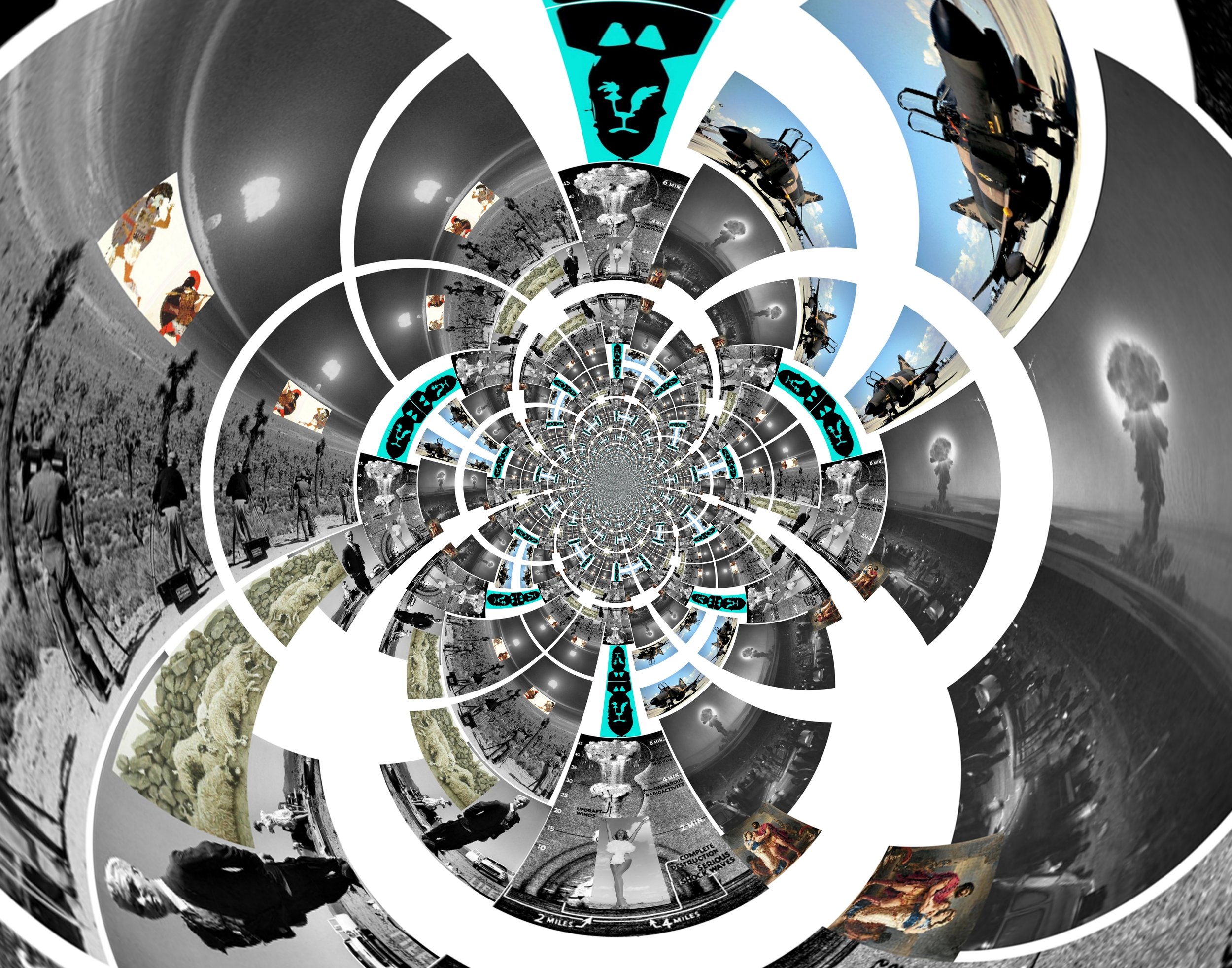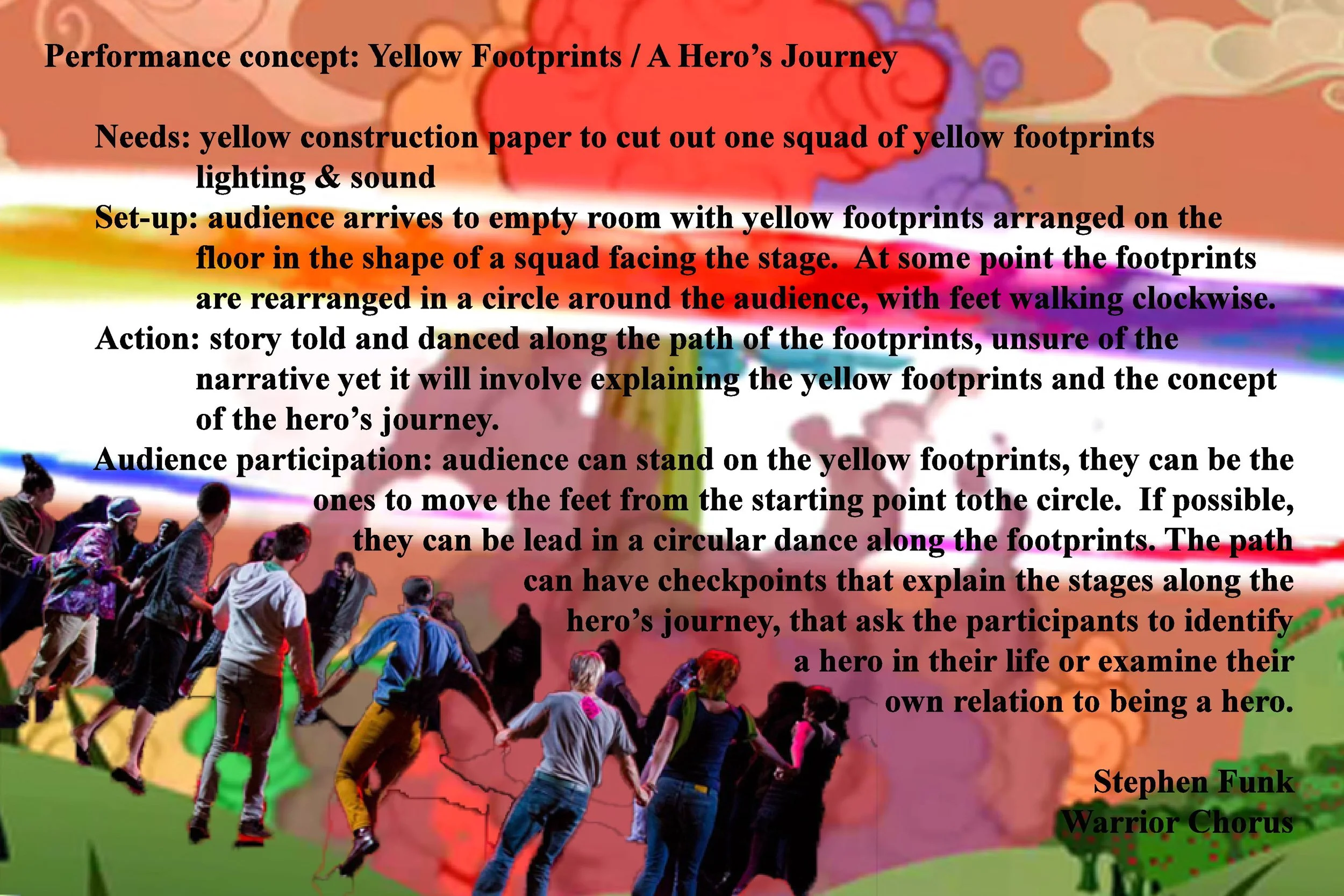Week of July 23
This week begins the brainstorming of the form, context, and ideas for their final projects. In the previous meeting they were tasked with creating a collage of possible themes to present to the group. They delivered a variety of ideas and forms spanning plays, dance performances, and song. The discussions that follow each short presentation not only evolve into deeper conversations about audience takeaways, they challenge common American ideals of war and valor.
James is the first to present, showing two glossy prints of multiple images. The juxtaposition of nuclear explosions, dead sheep, Iliad characters, with cartoon characters (Road Runner) and beauty queens (Ms. Atomic Bomb 1957) is strong, provocative imagery. Another version of this collage combines all the images in a geometric shape that blooms across the page. James plans to use his play writing background to create a one act stage reading that encompasses themes explored in the text.
Megan’s piece is inspired by the loss of a close friend. Photos of some of their last moments together show the camaraderie they shared as servicemembers, friends, and bandmates. Honoring the way music helped shape their friendship, Megan plans to tell her story through an original song or medley of songs that explore death and loss.
Steven, a former Marine with a background in choreography and French theater wants to create an immersive, participatory experience for the audience. One of the themes he wants to explore with his performance is society’s tendency to be drawn to disaster and turmoil, especially in media. He illustrates this with a photoshopped image of a colorful explosion surrounded by a crowd of dancers.
Although uncertain of the form of his work will take, Mike is very clear about what he wants the audience to glean. His time as a medevac pilot was deeply impactful and shifted his thoughts on heroism and honor. By examining the ancient Greek definition of heroism alongside the civilian interpretation and what he’s witnessed in the field, Mike hopes to expose the audience alternative views on heroism.
The common two dimensional view of military life - the hero complex vs. complicity in imperial violence, is what Bart wants to combat with his work. Emphasizing how these limiting portrayals rob veterans and fallen soldiers of their human complexities, Bart wants to explore the definitions of honor and duty as it concerns military and political responsibilities.
Mike and Bart’s views on heroism and honor contrast in a way that sparks a passionate conversation about who our heroes are and why. While Mike believes that those who die while fulfilling military duties have earned the title of “hero”, Bart wants to consider the weight of their full human experience. As the group chimes in, deeper questions arise. Should how and why a person joined the military be considered when labeling a person a hero? Does intent matter? Should we consider the fact that propagating heroism and death for one’s country influences the masses? Does dying in battle outweigh the full extent of a person’s life? These questions gave way to more discussions on individual ideas of heroism. While a consensus isn’t reached, a deeper understanding of the complexities of military service and its effects on individual worldview is revealed.
Closing out the final project idea presentations, Brian expresses his uncertainty about the form of his art. Sculpture, painting, writing, graphic design are some of the options he’s considering. He does know that he wants the audience to come away with a feeling of solemnity and more depth when considering the toll war takes on one’s humanity and society in general.
After this session's passionate discussions and ideas, it’s clear that the audience will take a great deal away from the group's perspectives and knowledge on war and military life.

